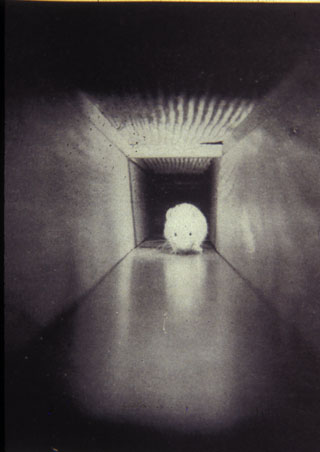
The experiment
Rats were trained to run in a straight, alley like maze for a food reward[3] which was located at the end of the alley.[2] Watson found that once the rat was well trained, it performed almost automatically on reflex.[2][5] Upon learning the maze over time, they started to run faster through each length and turn. By the stimulus of the maze, their behavior became a series of associated movements, or kinaesthetic consequences instead of stimulus from the outside world.[5] This routine continued until the length of the path changed, either farther or shorter.[3] If the conditioned rats were released into an alleyway or path that was shortened, they would run straight into the end of the wall[5] making a “kerplunk” sound. The first trial found that they would run full speed, passing up the food that had been moved closer.[3] Shortening the alleyway, and moving the food closer was an early signal that was ignored by the rats.[3] If the path was longer, the rats would run as usual until it reached their customary distance, the distance at which the food would normally be. They would then pause to sniff the area even though they had not reached the end of the alley, often ignoring food that was farther away.
If you are interested in reclaiming
your sovereignty and freedom, take the time to learn and study. There’s a wide web of
information. Get
your
head on straight. We highly recommend you start your study by reviewing our FREE
De-programming Video
series. It contains over 24 hours of free detailed video and audio material that you can absorb in this never-ending path for the correct information:
click here to Get Access.

